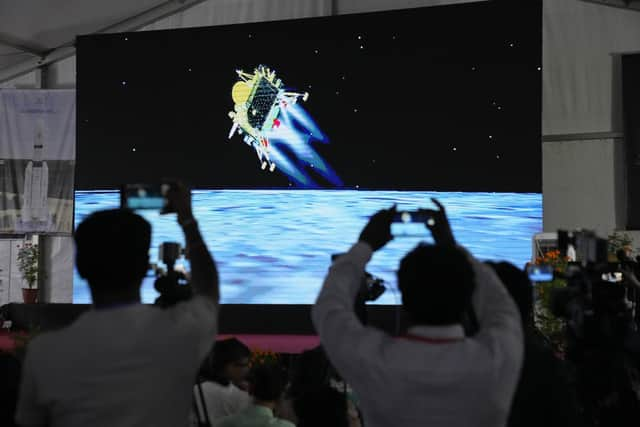Chandrayaan-3: both Moon rover and lander fall into 'sleep mode' after successful mission
and live on Freeview channel 276
Isro has said the pair have been put into "sleep mode" and "will fall asleep next to each other once the solar power is depleted and the battery is drained", it said.
Advertisement
Hide AdAdvertisement
Hide AdThe space agency said it hopes they will reawaken "around 22 September" when the next lunar day starts, as they need sunlight to charge their batteries and to function.


Regular updates of Vikram (lander) and Pragyaan (rover) have been provided by Isro, as they roam around the Moon's south pole.
In its latest update on Monday morning, Isro said Vikram had "soft-landed on the Moon again".
After the Chandrayaan-3' mission's lander was "commanded to fire its engines, it rose up by about 40cm [16 inches] and landed at a distance of 30-40cm", Isro said.
Advertisement
Hide AdAdvertisement
Hide AdThis "successful hop experiment" means the spacecraft could be used in future to bring samples back to the Earth or for human missions, it added.
India made history on 23 August as it became the first nation to land near the lunar south pole, and became the fourth country to achieve a soft landing on the Moon, after the US, the former Soviet Union and China.
Spacecraft Chandrayaan-3's landing had been carefully planned to coincide with the start of a lunar day, so the rover and lander will have 14 days of sunlight to charge their batteries and work. Both have now completed all their assignments and will stop working. But scientists say it is possible that they will come back to life when the next lunar day starts.
"The battery is fully charged. The solar panel is oriented to receive the light at the next sunrise. The receiver is kept on. Hoping for a successful awakening for another set of assignments!" it posted on social media platform, X, formerly called Twitter.
"Else, it will forever stay there as India's lunar ambassador."
Comment Guidelines
National World encourages reader discussion on our stories. User feedback, insights and back-and-forth exchanges add a rich layer of context to reporting. Please review our Community Guidelines before commenting.
